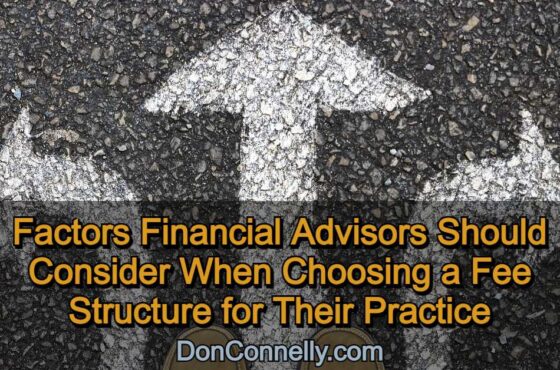Winning the “Why Do I Need a Financial Advisor” Argument

The investor’s chief problem—and his worst enemy—is likely to be himself.” ~Benjamin Graham
Long before it became a field of academic study, legendary investor Benjamin Graham knew a thing or two about behavioral finance. Graham went on to say, “In the end, how your investments behave is much less important than how you behave.”
For financial advisors, understanding how emotional and intellectual processes combine to influence investors’ decisions offers the opportunity to help their clients avoid costly mistakes and optimize investment outcomes.
The costly consequences of behavioral mistakes
Countless studies and examples illustrate the consequences of suboptimal decision-making caused by behavioral mistakes. The most notable is the annual Dalbar study that tracks investor performance versus the returns of the S&P 500 index. Its 2021 study found that the 20-year annualized return of the S&P 500 was 7.43% through 2020, while the return of the average equity mutual fund investor during that period was just 5.96%. While that may seem like a small gap, a hypothetical investment of $100,000 invested in the S&P 500 would have grown to $420,000 compared to $318,000 for the average investor. Dalbar attributes that $100,000 difference to emotionally based market timing decisions.
Or consider a recent example of investor underperformance. In the first nine months of 2021, the average equity investor earned 12.03% compared to the S&P 500, which gained 15.92%–a difference of 389 basis points. During that period, the average investor withdrew nearly $2,000 while achieving gains of $11,790. Investors who avoided withdrawing their money realized a gain of $15,923. In effect, that $4,000 difference is a permanent loss of capital for investors who made the decision to withdraw.
Behavioral biases: The emotional drivers of poor decisions
Behavioral finance researchers found that biases trigger most emotionally based decisions. We all have deeply ingrained biases that reside subconsciously in our psyche. Some behavioral biases are cognitive-related, stemming from information we process daily, while others are emotionally based, stemming from our impulses or intuition. Generally, our biases help guide our decisions as we navigate our everyday lives.
However, in investing, biases tend to work against us because they can cloud our perspective, which is sorely needed during times of stress. As financial advisors, you must contend with as many as nine or ten different biases that could be controlling your clients’ emotions and actions. Here are the three most common ones.
Recency bias
Recency bias is one of the more common behavioral biases. It causes clients to think that the way things are now or what happened recently is how they will always be. Recency bias typically reveals itself during volatile or down markets with an unhealthy tendency to focus on negative returns. Clients convinced that a market decline will continue will likely make emotionally charged decisions to flee the market.
Confirmation bias
A more subtle but equally dangerous bias, the confirmation bias causes clients to seek out information that supports their preconceived notions, ignoring perspectives that can refute them. If clients believe the market will continue to decline, they will only consider information supporting that perception and act accordingly.
Loss aversion
One of the more perplexing biases that actually explains a lot, loss aversion is an affliction that causes investors to feel the pain of losses far more than the joy of gains. They would rather sell their investments to avoid watching their account balances evaporate than focus on the long-term return potential.
While these biases are independent of each other, they can also work in conjunction, making it critically important to study them and understand them in the context of how your clients make decisions.
Clients need some perspective
While the intensity of this stock market may be unprecedented, it doesn’t change the long-term pattern. While there’s no knowing how long this bear market will last or how much lower the market may go, here’s what we do know:
- Since World War II, there have been 13 bear markets and 14 bull markets.
- On average, bear markets last about 13 months, while bull markets run for about 48 months.
- The average decline for bear markets is 26%, while the average bull market gain is 129%.
So, we know that for every bear market, a bull market of longer duration follows with gains that have extended the gains of the previous bull market. Therefore, the real risk to investors is not the next 26% bear market decline; it’s missing out on a 129% gain in the next bull market. The key takeaway is that any market decline, no matter how severe, is nothing more than a temporary disruption in a longer-term upward trend.
Your Value as a Financial Advisor
In helping clients confront their biases and overcome emotionally charged decision-making, advisors have the advantage of context and perspective, which needs to be shared liberally with their clients.
In today’s market environment, an advisor plays no more valuable role than that of a behavioral coach, helping clients understand how their biases control their decision-making and how to remove their emotions from the equation.
Watch this 2-minute video to learn how our 8-step training program will help you create your unique value proposition and develop a plan for using it day in and day out for the rest of your career to attract new clients.
See program details and enroll today!
Available as a self-paced program or in combination with an individual coaching session with Don Connelly, this program will help you reboot your practice and take it to new heights. Select your format and enroll now!



